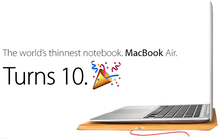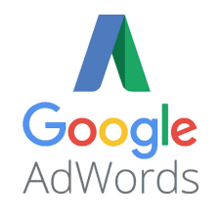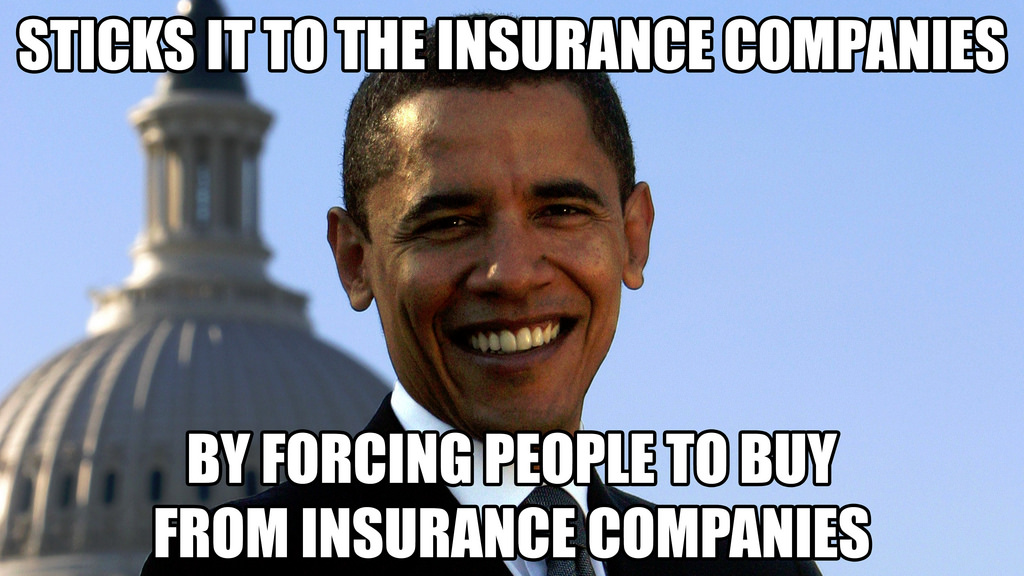Author Archives: Richard Emmons
Author Archives: Richard Emmons

Over the years I have learn so much from Jay Abraham on marketing, copywriting, and finding success in business. In this article, Jay makes the case for not working smart or hard on Saturdays. This story hit home to me and I hope it hits home to you as well. Enjoy.
4,420 Saturday Mornings…
The older I get, the more I enjoy Saturday mornings. Perhaps it’s the quiet solitude that comes with being the first to rise, or maybe it’s the unbounded joy of not having to be at work. Either way, the first few hours of a Saturday morning are most enjoyable.
A few weeks ago, I was shuffling toward the garage with a steaming cup of coffee in one hand and the morning paper in the other. What began as a typical Saturday morning turned into one of those lessons that life seems to hand you from time-to-time.
Let me tell you about it:
I started scanning my iTunes in order to listen to a Saturday morning podcast. Along the way, I came across an older sounding chap, with a tremendous presence and a golden voice. You know the kind; he sounded like he should be in the broadcasting business. He was telling whom-ever he was talking with something about “a thousand marbles.” I was intrigued and stopped to listen to what he had to say.
“Well, Tom, it sure sounds like you’re busy with your job… I’m sure they pay you well but it’s a shame you have to be away from home and your family so much. Hard to believe a young fellow should have to work sixty or seventy hours a week to make ends meet. It’s too bad you missed your daughter’s dance recital,” he continued.
“Let me tell you something that has helped me keep my own priorities.” And that’s when he began to explain his theory of a “thousand marbles.”
“You see, I sat down one day and did a little arithmetic. The average person lives about eighty-five years. I know, some live more and some live less, but on average, folks live about eighty-five years.
“Now then, I multiplied 85 times 52 and I came up with 4,420, which is the number of Saturdays that the average person has in their entire lifetime. Now, stick with me, Tom, I’m getting to the important part.
“It took me until I was fifty-five years old to think about all this in any detail”, he went on, “and by that time I had lived through over twenty-eight hundred Saturdays. I got to thinking that if I lived to be eighty-five, I only had about a thousand of them left to enjoy.
“So, I went to a toy store and bought every single marble they had. I ended up having to visit three toy stores to round up 1,560 marbles. I took them home and put them inside a large, clear plastic container right here in the shack next to my gear.
“Every Saturday since then, I have taken one marble out and thrown it away. I found that by watching the marbles diminish, I focused more on the really important things in life.
“There is nothing like watching your time here on this earth run out to help get your priorities straight.”
“Now let me tell you one last thing before I sign-off with you and take my lovely wife out for breakfast. This morning, I took the very last marble out of the container. I figure that if I make it until next Saturday then I have been given a little extra time. And the one thing we can all use is a little more time.
“It was nice to meet you Tom, I hope you spend more time with your family, and I hope to meet you again here on my show!”
You could have heard a pin drop when the discussion was over. I guess he gave us all a lot to think about.
I had planned to work that Saturday morning.
Instead, I went upstairs and woke my wife up with a kiss. “C’mon honey, I’m taking you and the kids to breakfast.”
“What brought this on?” she asked with a smile. “Oh, nothing special, it’s just been a long time since we spent a Saturday together with the kids.
And hey, can we stop at a toy store while we’re out? I need to buy some marbles.
A friend sent this to me, so I to you, my friend.
And so, as one smart bear once said…
“If you live to be a hundred, I want to live to be a hundred minus one day, so I never have to live without you.”
– Winnie the Pooh.
Pass this on to all of your FRIENDS, so that they can all enjoy the rest of their lives from this moment!

I’ve learned so much from Bob Bly over the years. When I was just starting out as a copywriter and marketing consultant, one of his most helpful products was “The Copywriter’s Toolkit.” I learned how to submit copy from studying this work and his class book, The Copywriter’s Handbook.
Every print ad has two main components. First, there is the layout and images of the ad which is created by the graphic designer. Second, there are the words used in the headline, body, and call to action of the ad.
Bob Bly describes how he submits his copy copy in his article below. In my case, I write the copy and submit it to my graphic designer who happens to be my wife Kathleen. In your case, you might write up an ad and then submit it to the graphic design department of your local paper, magazine, or even the Yellow Pages. By submitting your copy, i.e. words, this way, you’ll help the graphic designer and create a better ad with fewer changes.
Bob ends his letter with an offer for one of his ebooks. I get no affiliate commission for this. I help you learn more about marketing and hopefully Bob will get some sales of this great product.
Dear Direct Response Letter Subscriber:
Subscriber BM writes:
“Bob, can I ask a dumb logistical question? How exactly do you submit your copy? And in what form? In a word Doc? PDF?
“Do you format the copy exactly as you envision it, down to the headline font and size? And what about images and charts and
things like Johnson boxes?
“Do you dictate how things look graphically or just submit the raw text for everything? Just curious about that.”
So let me briefly provide the straightforward answers to these questions, which are anything BUT dumb:
1–I submit copy to clients as a word file, single-spaced, sent via an email attachment.
2–The body copy is in 12-point Times Roman. Headlines are 14-point Arial bold. Subheads are 12-point Arial.
3–If there are graphics, I cut and paste the image into my Word document directly from the source material (e.g., Powerpoints, white paper PDF documents, websites) whenever possible, with the source referenced in a footnote.
4–If the source material is copyrighted content owned by my client, I assume they can use the visuals as is.
5–If the source is copyrighted material belonging to someone else, I still cut and paste it with a footnote into my document, but alert the client that they must either obtain written permission to use it or redraw it so as not to violate copyright.
6–I often include in the Word document for my copy some “copywriter’s roughs” — crude layouts, drawn in Microsoft Word. Note: I have collected my layout templates in a kit you can buy; see my PS below for details.
7–I clearly indicate what is a headline, subhead, or body copy; provide images for guidance; and either give layout instructions in text [in square brackets] — or using my copywriter’s roughs (see #6 above).
But, I do NOT “dictate how things look graphically,” format the copy in final form, or do a finished graphic design or layout of any kind.
Instead, I provide sufficient “art direction” (layout suggestions) so that the graphic designer can produce a finished layout that will work in print or online.
I will also, at no charge, review the layout, often several times, as it is being developed by the graphic designer and made final by them and the client.
But I do not try to tell the graphic designers how to do a job for which they are better skilled and suited than I am.
Sincerely,
Bob Bly
P.S. For more information on how you can get a collection of ready-to-use graphics templates for promotional layouts — everything from sales letters and postcards, to ads and landing pages — or to use it risk-free for 90 days — click here now:
Bob Bly
Copywriter / Consultant
31 Cheyenne Dr.
Montville, NJ 07045
Phone 973-263-0562
Fax 973-263-0613
www.bly.com

Normally marketing is not rocket science. John E. Kennedy defined advertising as “salesmanship in print,” not rocketship in space.
However, Elon Musk used the test launch of SpaceX heavy launch rocket to promote one of his other companies, Tesla. The payload of this “half a billion dollar” experiment was his cherry red Tesla roadster. Elon Musk and Tesla gots tens of millions of dollars of free advertising yesterday. This was in addition to the free advertising received by SpaceX. Of course, the rocket could have blown up on the launch pad or in the sky. Yet it didn’t so we all witnessed a technological and marketing home run yesterday.
You can read about this heavy lift rocket here:
http://www.spacex.com/falcon-heavy
Did you notice the unique selling proposition (USP) for the rocket?
The World’s Most Powerful Rocket
Now click the SpaceX logo in the upper left to go to the home page. Watch the slider and you’ll SpaceX’ company USP:
Making Life Multiplanetary
The company describes itself this way:
SpaceX designs, manufactures and launches advanced rockets and spacecraft
No one can accuse Elon Musk as lacking vision either:
“You want to wake up in the morning and think the future is going to be great – and that’s what being a spacefaring civilization is all about. It’s about believing in the future and thinking that the future will be better than the past. And I can’t think of anything more exciting than going out there and being among the stars.”
— Elon Musk, CEO and Lead Designer, SpaceX
In case you missed it, here is the launch of this amazing rocketship. Enjoy.
Walmart changed its name from Wal-Mart Stores, Inc. to Walmart Inc. I read about it on Walmart’s blog. Yes, Walmart has a blog. Does your business have a blog?
In the old days, you could divide companies between online and bricks and mortar businesses. E-commerce meant a company sold products and services online from their website or a platform like Ebay or Amazon. Bricks and mortar businesses sold from a physical location. Today, Amazon owns Whole Foods and rumors abound about Amazon buying Target Stores next.
Here are some excerpts from the article:
Notice that Walmart dropped the comma before Inc. Same as Apple when it changed its name from Apple Computer, Inc. to Apple Inc.
Most of us, and I’d guess all our customers, refer to our company as Walmart and still will. Changing our corporate name from Wal-Mart Stores, Inc., to Walmart Inc. is just a symbol of how customers are shopping us today and how they’ll increasingly shop us in the future. Whether it’s in our stores, on our sites, with our apps, by using their voice or whatever comes next, there is just one Walmart as far as our customers are concerned. When they shop with us, they expect it to be an easy and seamless experience.
Good move to include Sam Walton in this announcement. I wonder who came up with the idea of adding the dash.
Changing our corporate name to Walmart is a way of better reflecting our company’s path to win the future of retail. It’s also a bit about returning to the company’s roots. You might be surprised to learn that, when Sam Walton opened the first store in 1962, the name on the front of the building was simply, “Walmart.” A few years later, we incorporated as Wal-Mart, Inc., and amended the name to Wal-Mart Stores, Inc., when we went public in 1970.
Walmart is a huge organization. Imagine the amount of work required to change the name of the company.
We began with great stores and steadily expanded to include clubs and distribution centers. In 1991, we became a global retailer when we opened our first international location in Mexico City, and we launched Walmart.com in 2000. Today we operate under almost 60 different banners around the world, including eCommerce sites, and have more than 11,600 stores and clubs in 28 countries.
Like every blog which allows comments, you can leave positive and negative comments on Walmart’s blog. You can read them and the rest of the article here:
The online and offline worlds are coming together for Walmart for the benefit of its customers and shareholders. Their name change signifies a game change happening across the economy. All businesses will be affected over time including yours. This is the new normal for commerce. Get started now before your clients expect it.

On January 15, 2008, Steve Jobs announced the MacBook Air computer to an enthusiastic crowd. He described the MBA as “The world’s thinnest notebook. MacBook Air.” Along with taking away weight and thickness, the computer also did away with an optical drive and many ports. Apple looked ahead to a wireless world which people looked to the cloud for software, movies, music, and file storage.
Watch this advertisement from 2008 which introduced the world to the MacBook Air.
https://www.youtube.com/watch?v=E98Eyl5Et0w&’?rel=0′
Later, Apple added an 11.6″ MacBook Air with faster processors, more RAM, and bigger SSD drives. I am typing on mine now. I rarely use the screen or keyboard because I use a 32″ external monitor and wireless keyboard and trackpad. Yet I can carry this mini-powerhouse computer between home office and work office and take everything with me.
I recently found some old briefcases in my garage which I’d used to carry my laptop computers over the past 25 years. They are HUGE and heavier than my MacBook Air today. I donated them to my local gospel rescue mission. Someone will find a use for them. And one more thing…
Happy Birthday MacBook Air!
You can learn a lot about how to turn negatives, i.e. no optical disk, into positives by watching Steve Job’s MacBook Air product announcement presentation. He always worked very hard on his presentations to make them appear effortless and be very conversational. In this one, he set the stage by saying nice things about Sony’s current notebook yet saying that Apple can do better. He told why it’s better and then he proved it.
You can read more about this revolutionary computer at MacRumors.com.
Today marks the tenth anniversary of the late Steve Jobs unveiling the MacBook Air, the world’s thinnest notebook at the time.
After introducing the AirPort Time Capsule and sharing some iPhone and Apple TV news, Jobs walked over to his podium, grabbed a manilla envelope, and pulled out the sleek MacBook Air. The crowd at Macworld erupted with applause as Jobs held the ultra-light notebook in the palm of his hand.
The thinness came at a cost. The base model ran $1,799 for a 1.6GHz Intel Core 2 Duo processor, 2GB of RAM, and an 80GB hard drive. A maxed out version was also available for $3,098, around $300 more than the base Mac Pro at the time, with a faster 1.8GHz processor and a 64GB solid-state drive.
Go to MacRumors to read the rest of this article.
In the beginning, online newsites and bloggers could earn revenue with banner ads. Banner ads later became GIF images which could be annimated. Then users began using ad blocker plugins to make ads disappear. Advertisers began tracking users across the internet. Privacy was lost, bandwidth usage went up and broswer performance declined. Now browsers make it easy for users to “just say no” to digital advertising.
The latest data shows Apple’s Safari has begun to hurt digital advertisers in a big way. This would be a big problem if Safari only ran on Macs. Unfortunately for advertisers, Safari is the default browser for iPhones and iPads. Read this from MacRumor.com:
Internet ad firms are losing out on “hundreds of millions of dollars” following the implementation of anti-tracking features introduced to Safari with iOS 11 and macOS High Sierra, reports The Guardian.
One of the largest advertising firms, Criteo, announced in December that Intelligent Tracking Prevention could have a 22 percent net negative impact on its 2018 revenue projections. Other advertising firms could see similar losses, according to Dennis Buchheim of the Interactive Advertising Bureau.
“We expect a range of companies are facing similar negative impacts from Apple’s Safari tracking changes. Moreover, we anticipate that Apple will retain ITP and evolve it over time as they see fit,” Buchheim told the Guardian.Intelligent Tracking Prevention techniques were introduced in iOS 11 and in Safari 11 in macOS High Sierra 10.13, both of which were released back in September. Intelligent Tracking Prevention is designed to stop companies from invasively tracking customer web browsing habits across websites. Intelligent Tracking Prevention does not block ads — it simply prevents websites from being able to track users’ browsing habits without their permission.
Shortly after the launch of the two new operating systems, advertising groups asked Apple to “rethink” its position and its decision to block cross-site tracking, arguing that Apple would “sabotage the economic model for the internet.”
An open letter signed by the Data and Marketing Association and the Network Advertising Initiative said the collective digital advertising community was “deeply concerned” because Apple’s cross-site tracking prevention is “bad for consumer choice.” “Blocking cookies in this manner will drive a wedge between brands and their customers, and it will make advertising more generic and less timely and useful,” read the letter.
In response, Apple defended cross-site tracking and said its customers “have a right to privacy.” From Apple in September:
Ad tracking technology has become so pervasive that it is possible for ad tracking companies to recreate the majority of a person’s web browsing history. This information is collected without permission and is used for ad re-targeting, which is how ads follow people around the Internet. The new Intelligent Tracking Prevention feature detects and eliminates cookies and other data used for this cross-site tracking, which means it helps keep a person’s browsing private.There was initially an Intelligent Tracking Prevention workaround that companies like Criteo were using following the launch of iOS 11, but as mentioned in Criteo’s announcement, Apple closed that loophole with the introduction of iOS 11.2.
This war isn’t over yet but it doesn’t look good for digital advertisers. You can read the rest of this article here.
https://www.macrumors.com/2018/01/09/ad-firms-hit-hard-by-safari-tracking-prevention/

Forget setting New Year’s Resolutions this year. Instead, find success this year by adapting these success habits. This article by Brian Tracy was first published in the daily e-letter, ETR.
The habits of success have been studied by great thinkers and philosophers for at least 2,500 years. After personally studying the subject for more than 30 years, I have identified seven habits that you need to develop if you want to perform at your very best in everything you do.
1. You need to become goal-oriented — dedicated to setting and working from clearly written objectives every day of your life.
2. You need to become results-oriented. This involves two practices. The first is the practice of continuously learning so that you become better at what you do. The second is the practice of time management — setting very clear priorities and then concentrating single-mindedly on the most valuable use of your time.
3. You need to become action-oriented — the most important habit for material success. This is the ability to get on with a job and get it done fast. You need to overcome procrastination, push aside your fears, and launch yourself 100% toward the achievement of your goals.
4. You need to become people-oriented. Virtually all of your happiness in life will come from your ability to get along well with other people. And getting along well with other people is based on a set of habits that you learned, or failed to learn, in childhood: patience, kindness, compassion, and understanding. But it is never too late to develop those habits. . And the more you practice them, the more you will internalize those qualities and actually become the person you want to be.
5. You need to be health-oriented. This means that you must make a conscious effort to eat the right foods in the right proportions. You must exercise on a regular basis to keep your body young and fit. And you must get enough rest and enjoy leisure activities that will enable you, in combination with diet and exercise, to live a long, full life.
6. You need to be oriented toward honesty and integrity. In the final analysis, the character you develop as you go through life is more important than virtually anything else. You set very clear values for yourself and you organize your life around your values. You develop a vision for yourself and then you live your life consistent with your highest ideals. You never compromise your integrity or peace of mind for anyone or anything.
7. The seventh habit that you need — the one that guarantees all the others will happen — is that of self-discipline. Your ability to discipline yourself, to master yourself, to control yourself, goes hand in hand with your success in every area of life.
My favorite definition of self-discipline comes from Elbert Hubbard. He said, “Self-discipline is the ability to make yourself do what you should do, when you should do it, whether you feel like it or not.”

Do you have a contrarian mindset? Do you question the notion that if “everyone’s doing it” than it must be okay? Do you spend money on Google AdWords?
If you answered “Yes” to these three questions than maybe, just maybe, you’ll reduce or eliminate your AdWords advertising.
Many business owners keep advertising the way they always have. They have no idea whether the advertising is still working. Take Yellow Pages as an example. Please, take my yellow pages away now because the font is too small and interest searches are so fast.
Plumbers and lawyers may still get new clients from Yellow Pages. For most people it’s just autopilot and they don’t think about it until the yellow pages rep calls them up to renew for the following year. Then it’s a one year to commitment to renew or not to renew.
Google AdWords have been a goldmine since being introduced by Google in 2000. A goldmine for Google and for millions of businesses as well. Is this still true?
As Fred Gleeck says, “data ends discussion.” The following article questions the necessity of AdWords to bring traffic to their businesses and make online sales. To summarize, a few large companies cut online advertising and it didn’t affect sales growth.
Category 1 storm clouds are gathering over what has traditionally been one of the most lucrative, and perhaps only profitable, sectors to come out of Silicon Valley in decades: online advertising.
Two months ago, it was P&G which fired the first shot across the “adtech” bow when not long after it announced it was slashing its digital ad spending because it thought it was not getting the kind of return on investment it desired, it made a striking discovery: “We didn’t see a reduction in the growth rate.” CFO Jon Moeller said “What that tells me is that that spending that we cut was largely ineffective.”
Proctor & Gamble thinks that “bots” were clicking on their Facebook ads rather than human beings who actually buy products.
The advertising system has become so automated that companies pay for advertising on fake news websites with fake traffic.
A separate, if just as concerning problem emerged last month, when the WSJ reported that online ad giant, Google, would issue refunds to advertisers for ads bought through its platform that ran on sites with fake traffic, and generated no actionable advertising “clicks.” Just how much of Google’s ad revenue (and thus profits and market cap) had been inflated over the years by said “fake ads”?
The article quoted the CEO of Restoration Hardware who discovered where most of their clicks were coming from.
So fast forward to last week, when during Thursday’s Global Retailing Conference organized by Goldman Sachs, Restoration Hardware delightfully colorful CEO, Gary Friedman, divulged the following striking anecdote about the company’s online marketing strategy, and the state of online ad spending in general (courtesy of @parsimony16). What Friedman revealed – in brief – was the following: “we’ve found out that 98% of our business was coming from 22 words. So, wait, we’re buying 3,200 words and 98% of the business is coming from 22 words. What are the 22 words? And they said, well, it’s the word Restoration Hardware and the 21 ways to spell it wrong, okay?”
Stated simply, the vast, vast majority of online ad spending is wasted, chasing clicks that simply are not there.
Let me spell this out for you. Restoration Hardware was buying AdWords for 3,200 keywords. These are words which prospects might enter into search engines. Paying for 3,200 keywords on AdWords would cost a lot of money. Yet the top keyword was the name of the business, “Restoration Hardware.” The rest of the top 22 were misspellings of “Restoration Hardware.” Let me make up a few for you as….
I had to work hard to keep my spellchecker from correcting my typos. I copied the last one into the Google search box and “Restoration Hardware” appeared as the top entry. I doubt that Restoration Hardware paid for this placement. Google became the #1 search engine because it overcame spelling mistakes to deliver search results based on what you want to get. Regardless of your ability to spell.
One wonders how long before all retailers – most of whom are notoriously strapped for revenues and profits courtesy of Amazon – and other “power users” of online advertising, do a similar back of the envelope analysis, and find that they, like RH, are getting a bang for only 2% of their buck? What will happen to online ad spending then?
A drop in online advertising should be a big concern for Google and Facebook. It is not your concern. You should be concerned on spending money on advertising which will pay for itself by bringing in new and existing clients. You need to do what is in your best interest.
You should have no doubt that Google will do what’s in its best interest. Such as using direct mail to get new clients for Google AdWords. Yesterday, I received a direct mail offer from Google AdWords customized for my company:
Right now, people are looking for businesses just like yours.
Make sure Reality Marketing LLC shows up on Google the moment potential customers search for what you have to offer-whiter they’re at home or out on the go. Learn how Google can help.
If people are looking for me, they will search for “Richard Emmons” and they will find me one way or another. I don’t plan to spend money on AdWords on these keywords:
You can use AdWords wisely to help people who are looking for your products and services. This can make you money. Just be sure to send your clicks to special landing pages or special offers so you can calculate whether the ads are working or not.

Send a fax and you’ll be reminded of how far technology has gone over the past 30 years. Being located in an executive suites business center allows me to send a fax whenever I want to. Which isn’t very often. In this article Bill Myers writes about an online fax option which allows you to send short faxes for free and longer faxes for a small fee.
I don’t have a fax machine. Not one that you’d recognize.
What I have is my computer. And even though it’s not connected to any phone service, I can send (and receive) faxes with it.
Of course, these days I don’t have the need to send many faxes. Probably fewer than five a year.
But when I do need to send a fax, I create the document on my computer, save it as either a PDF or .doc file, and send it using a free eFax service that works via the internet.
The service is free, works instantly, and confirms your fax has been sent and received.
You probably wouldn’t need to use a service like this more than a few times a year. But if you don’t have a fax machine and need to fax a few pages to someone, knowing about this free fax service can save you a trip to wherever they do have a fax machine.
You can send fives faxes a day, up to three pages each at no charge. If you need to send longer faxes (up to twenty-five pages) they are $1.95 each (via PayPal).
So if you don’t have a fax machine, but need to send an occasional fax, https://faxzero.com could be the easy solution.
You can get more tips from Bill Myers by signing up for his tip of the week. https://www.bmyers.com

You can raise your company’s profits by increasing your revenues and by decreasing your overhead expenses. Healthcare insurance premiums have skyrocketed over the past 8 years since the passage of the misnamed Affordable Care Act. Thankfully, the ObamaCare Senate bill included an exemption for health care sharing ministries. This was the bill signed into law and we live under today.
Traditional health insurance you pay premiums to insurance companies who send checks to doctors, hospitals and drug companies. Most policies today have high premiums and high deductibles which result in families spending $15,000 or more annually before getting any money paid to them for healthcare expenses.
Christian health care sharing ministries function very differently from health insurance. Members must meet membership requirements, there are pre-existing condition exclusions, and members may not consume illegal drugs or excessive amounts of alcohol. Members are cash patients who pay for medical expenses out-of-pocket. Members do not make insurance “claims” but rather submit “requests” which are paid directly from one member to another member.
This is a “peer-to-peer” model whereby families pay substantially less than they would with a traditional insurance policy. I have saved over $100,000 in insurance premiums over the past ten years. Let me describe how it works.
I left corporate America in 2005 when I helped sell my company to another firm in our industry. I went on COBRA and began paying $800 per month for a policy with a $5000 deductible. This meant we needed $15,000 in annual medical expenses before we would receive any benefit. We paid this for a year before going back to Samaritan Ministries which we used for 1998 and 1999. Our monthly outlay for our family of six fell to just $350 per month. Each month we would receive the Samaritan Ministries newsletter which included the name and address of the family who needed our help. My wife would send a check with a note of encouragement directly to the family in need. Ten years later, my family of three now pays less than $550 per month for our plan. Such a deal.
What about the deductible? Under our last health insurance policy we had a $5000 deductible and $20 office co-pay. With Samaritan Ministries, we covered the first $300 of any health matter. Anything above $300 could be submitted as a health care “request.” These requests are sent to one or more families who pay their share of the expense.
One time I slid off my metal roof and cut my fingers on the way down. I went to the doctor and got 12 stitches. Because it was under $300 we simply paid for it and that was the end of it. No “request” was made because of the low amount. I asked for and received a small cash discount because the urgent care center did not have to submit a claim to an insurance company. A win-win deal for everyone involved.
Will Congress finally repeal and replace the Affordable Care Act? Who knows. Now you know you have an alternative. I encourage you to start learning about health care sharing ministries today. If you qualify you can avoid high health insurance premiums and the ObamaCare penalties. You can learn more by reading this article on Wikipedia.
https://en.wikipedia.org/wiki/Health_care_sharing_ministry
If you choose to go with Samaritan Ministries, please tell them Richard Emmons sent you. I will receive a small finders fee which Samaritan Ministries gladly pays for this word-of-mouth advertising.